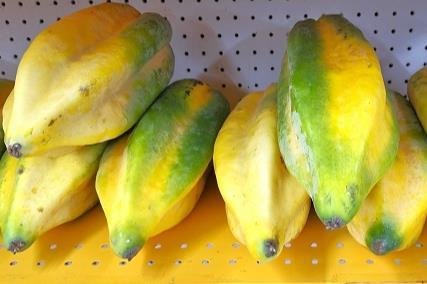New method pinpoints virus that targets Ecuador fruit crop

Scientists in Ecuador have developed a new method to detect and diagnose a virus that devastates crops of babaco, a fruit plant of economic importance to
The most effective sets of primers were chosen for reverse transcription polymerase chain reaction (RT-PCR) and SYBR® Green-based quantitative reverse transcription polymerase chain reaction (RT-qPCR) in symptomatic and asymptomatic babaco plants. Among 28 plants tested, 25 were positive and 3 were negative for BabMV using species-specific and genus-specific primers in RT-PCR and RT-qPCR, while the PapMV positive control used was detected with the genus-specific primers and was negative for the species-specific primers.
In this way, the scientists standardized a protocol that could be used to detect BabMV and its closest relatives in babaco crops and contribute to a more efficient production of this fruit in Ecuador.
Scale of virus threat
What proved surprising was the scale of the threat posed by the virus.
“Babaco Mosaic Virus (BabMV) appears to be a highly prevalent phytopathogen in babaco plants, even those grown under greenhouse conditions. Our study, which focused on nursery babaco plants, highlights the widespread nature and significant concern of this virus in Ecuador,” Dr Torres said.
“The presence of BabMV impacts both food security and the economic sustainability of many local farmers in Ecuador.
“The results of our research shed light on a methodology that could also be developed for other plant pathogens that affect economically important crops throughout the region. Efficient detection and diagnosis methods are the first step in controlling diseases that reduce crop production and yield.
“In this way, the primers developed in this study will help to identify affected crops in the country and start developing strategies to manage the diseases caused by BabMV and its closest relatives.”
Larger sample size
Future studies will require a more diverse sample size to strengthen and validate the robustness of the primers, Dr Torres said.
“Our study was limited to nursery babaco plants from three different localities in Ecuador, serving as a preliminary test of our primers on an accessible and affordable group of plants at the time. Subsequent studies should include a larger sample size from various locations to further validate our results. Additionally, future research should include plants growing in the field, not just in nurseries, to gain a broader understanding of our primers’ validity.”
The study was led by four Ecuadorian women scientists from Universidad San Francisco de Quito (USFQ) from the Plant Biotechnology Laboratory. It is worth mentioning that the first author of this publication is Martina Albuja, a young researcher who will soon begin her master’s studies in the United States.
The study was supported by a research grant from the Colegio de Ciencias Biológicas y Ambientales of the USFQ. ‘Development of novel species-specific and genus-specific primers for the detection of Babaco Mosaic Virus (BabMV)’ appears in Letters in Applied Microbiology.